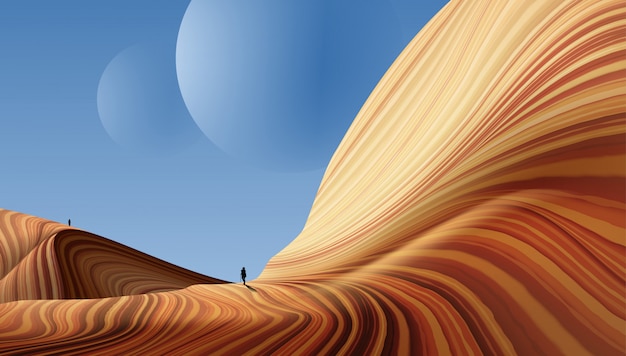

The Gobi Desert is the largest desert in Asia.
It covers parts of northern China and southern Mongolia.
The Gobi Desert is known for its extreme temperature changes.
It can be scorching hot during the day and freezing cold at night.
The Gobi Desert is home to some of the world’s rarest and most endangered species.
It is a crucial habitat for the Bactrian camel, snow leopard, and Gobi bear.
The Gobi Desert is one of the least populated places on Earth.
It has a unique and diverse ecosystem despite its harsh environment.
The Gobi Desert is famous for its sand dunes, some of which reach heights of over 500 meters.
It is also known for its rocky landscapes and unusual rock formations.
The Gobi Desert is rich in mineral resources, including coal, copper, and gold.
It was an important part of the Silk Road trade route in ancient times.
The Gobi Desert has a significant cultural and historical importance in Mongolia and China.
It is a popular destination for adventure seekers and travelers looking for a unique experience.
The Gobi Desert is often used as a location for film shootings, thanks to its otherworldly landscapes.
It is the birthplace of several dinosaur species, and many significant fossils have been discovered there.
The Gobi Desert experiences very little rainfall, making it one of the driest places on Earth.
Despite the aridity, there are some oasis areas in the Gobi Desert that support plant and animal life.
It is known for its stunning sunsets and sunrises, thanks to its vast open spaces.
The Gobi Desert has a rich cultural heritage, with nomadic herders living in the region for thousands of years.
It is a paradise for stargazers due to its clear skies and minimal light pollution.
The Gobi Desert has a strong influence on the climate in surrounding regions, including the formation of sandstorms.
It is a natural barrier that separates China from Mongolia.
The Gobi Desert has been inhabited by humans for at least 30,000 years.
It is home to the world’s second-largest cave, the Amagat Cave.
The Gobi Desert is an excellent place for paleontologists, as many well-preserved fossils have been found there.
It is believed that the Gobi Desert was once a lush and fertile region millions of years ago.
The Gobi Desert has inspired many writers, poets, and artists with its rugged beauty.
It is a challenging environment for survival, with limited water and food sources.
The Gobi Desert is an important research area for scientists studying climate change and desertification.
It played a significant role in the history of the Mongolian Empire and Genghis Khan’s conquests.
The Gobi Desert has a unique flora, with plants adapted to withstand extreme temperatures and scarce water.
It is home to several nomadic tribes who have preserved their traditional lifestyle for generations.
The Gobi Desert has a mystical aura, with many myths and legends associated with the region.
It is a treasure trove of geological wonders, showcasing the Earth’s fascinating natural processes.
The Gobi Desert has been featured in numerous documentaries, showcasing its diverse wildlife and stunning landscapes.
It is a popular destination for fossil hunting enthusiasts, with the possibility of discovering new dinosaur species.
The Gobi Desert is a mecca for birdwatchers, with over 300 species of birds recorded in the region.
It offers endless opportunities for outdoor activities such as hiking, camel riding, and camping.
The Gobi Desert is a harsh yet beautiful reminder of the Earth’s incredible diversity.
It is a place where one can truly appreciate the power and resilience of nature.
The Gobi Desert’s remote and serene landscapes provide a perfect escape from the modern world.
It is a place where one can experience solitude and connect with the vastness of the universe.
The Gobi Desert holds mysteries waiting to be unraveled, making it a source of endless fascination.
It is a testament to the human spirit, as nomadic tribes have thrived in the Gobi Desert for centuries.
Around the world, coffee enthusiasts enjoy Monin coffee concentrate since it is a multipurpose product. Conveniently combining…
The Importance of Choosing the Right Shower for Your Bathroom Renovating your bathroom can be…
Usain Bolt holds the record for the fastest 100-meter sprint in history.Bolt was named Sportsman…
Love is in the air... and it smells suspiciously like chocolate!Roses are red, violets are…
Life's a beach, take a picture and relax.Sun, sand, and salty kisses. That's what beach…
Hungary is home to the largest thermal water cave system in the world.The Rubik's Cube…